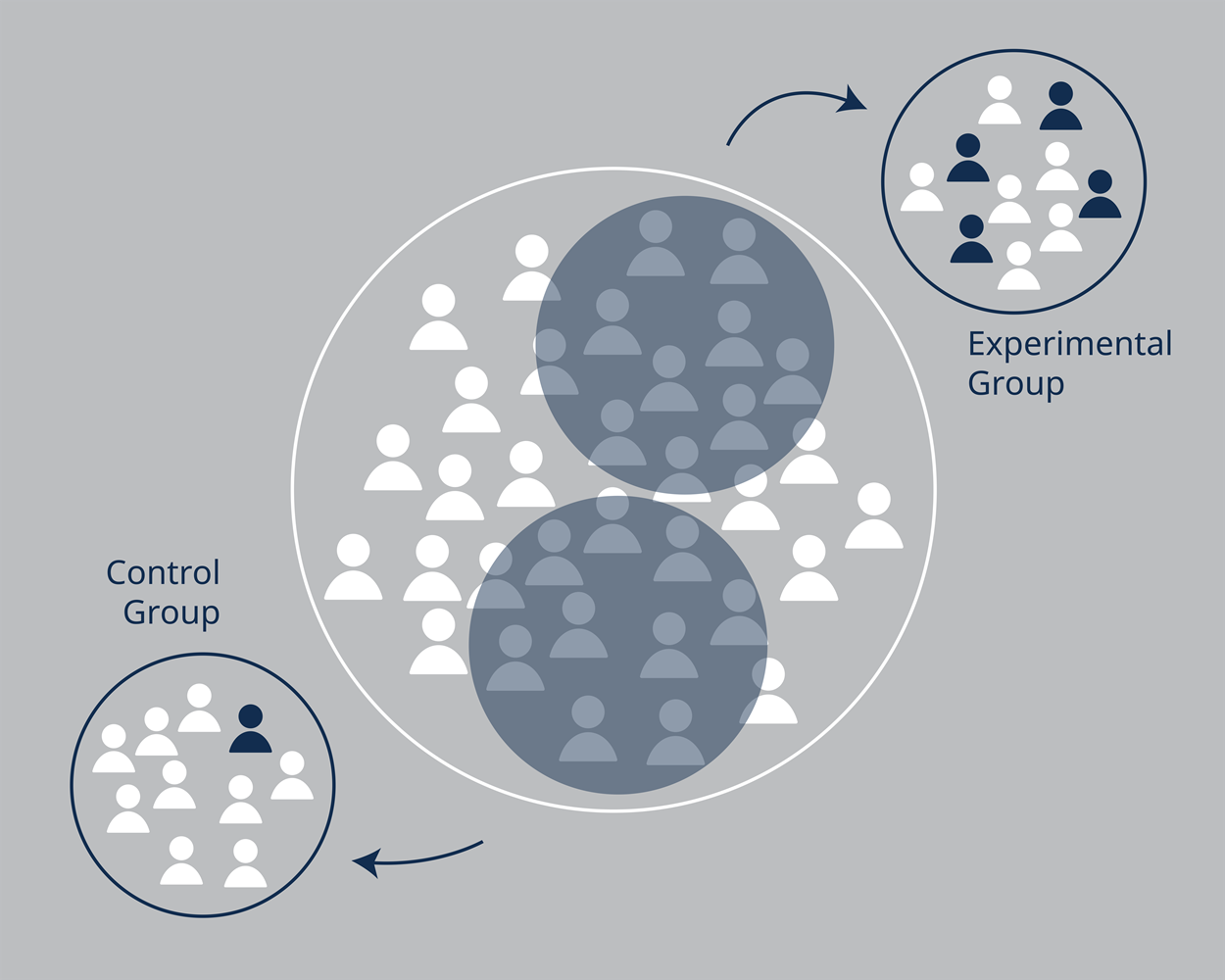2. Common Terms and Equations
Causation
Often in the health sciences, finding a correlation between two variables is not enough, as correlation does not necessarily imply causality. Investigators are interested in whether an exposure or a risk causes a particular health outcome. Questions like: Does smoking cause lung cancer? Will taking a particular medication cause a decrease in blood pressure?
The concept of probabilistic causation is used in statistics. Probabilistic causation means that the relationship between the independent variable and the dependent variable (X and Y) are such that X increases the probability of Y when all else is equal. Based on probability theory, a randomized control trial (RCT) is one of the study designs most likely to determine a causal relationship. A RCT is a study in which study subjects are randomly assigned to one or two groups. The first group (called the experimental group) receives the intervention to be tested while the second group (called the control group) does not receive the intervention. The two groups are then followed up and any differences between them in a given health outcome are recorded. RCTs are sometimes used in clinical testing but are frequently unfeasible or unethical for other types of health and social science research. There are many ways to design research and alternative methods for assessing causal relationships other than RCTs.
Guidelines for Assessing Causation
One way to determine whether a relationship between variables is causal is based on three criteria for research design:
- Temporal Precedence - The hypothesized cause happens before the measured effect.
- Covariation of the Cause and Effect - There is an established relationship between the two variables regardless of causation.
- Lack of Plausible Alternative Explanations - Plausible alternative explanations are other factors that may cause the dependent variable under observation. These alternative explanations are closely related to the concept of internal validity.1
Another way to determine whether a relationship between variables is causal is based on using a standard criterion for research, commonly known as the Bradford Hill’s criteria:2
- Temporal Precedence - The cause must occur before the effect.
- Strength of Association - In general, a stronger association may indicate a causal relationship.
- Dose-Response Relationship – A higher level of exposure to a causative agent produced a higher likelihood of developing the effect (i.e., high exposure to smoking produces a higher likelihood of lung cancer). This may sometimes be called the biological gradient.
- Biological Plausibility – A relationship that is biologically plausible is more likely to be causal.
- Consistency – If a relationship is found in multiple studies, then it is more likely to be causal.
- Experimental Evidence – Evidence of a causal relationship found in an experimental study (as opposed to an observational study) provides stronger evidence of a causal relationship, especially when the study is conducted within the same species.
- Coherence – The conclusions drawn from the study should not completely conflict with the general knowledge about the natural history or biology of the disease.
- Specificity of Association – Historically, if a causative agent was associated with only one outcome, then it was viewed potentially causal. However, this criterion is no longer the norm as it has been demonstrated that some causes may result in multiple different outcomes (i.e., tobacco use is linked to lung cancer, heart disease, diabetes, etc.).
- Analogy – If a relationship is analogous to another, then it may be causal. This is historically used to infer cases of human disease when experimental studies were conducted in other species.
1. Martyn Shuttleworth (Jul 5, 2009). Internal Validity. Retrieved Aug 19, 2022 from Explorable.com: https://explorable.com/internal-validity
2. Dohoo I., Martin W., Stryhn H. (2012). Methods in Epidemiologic Research. VER.
